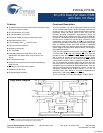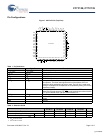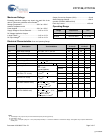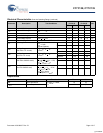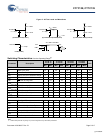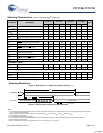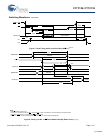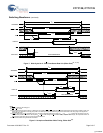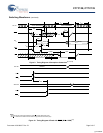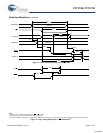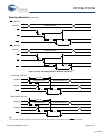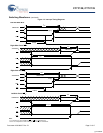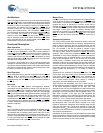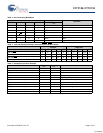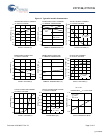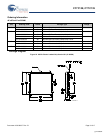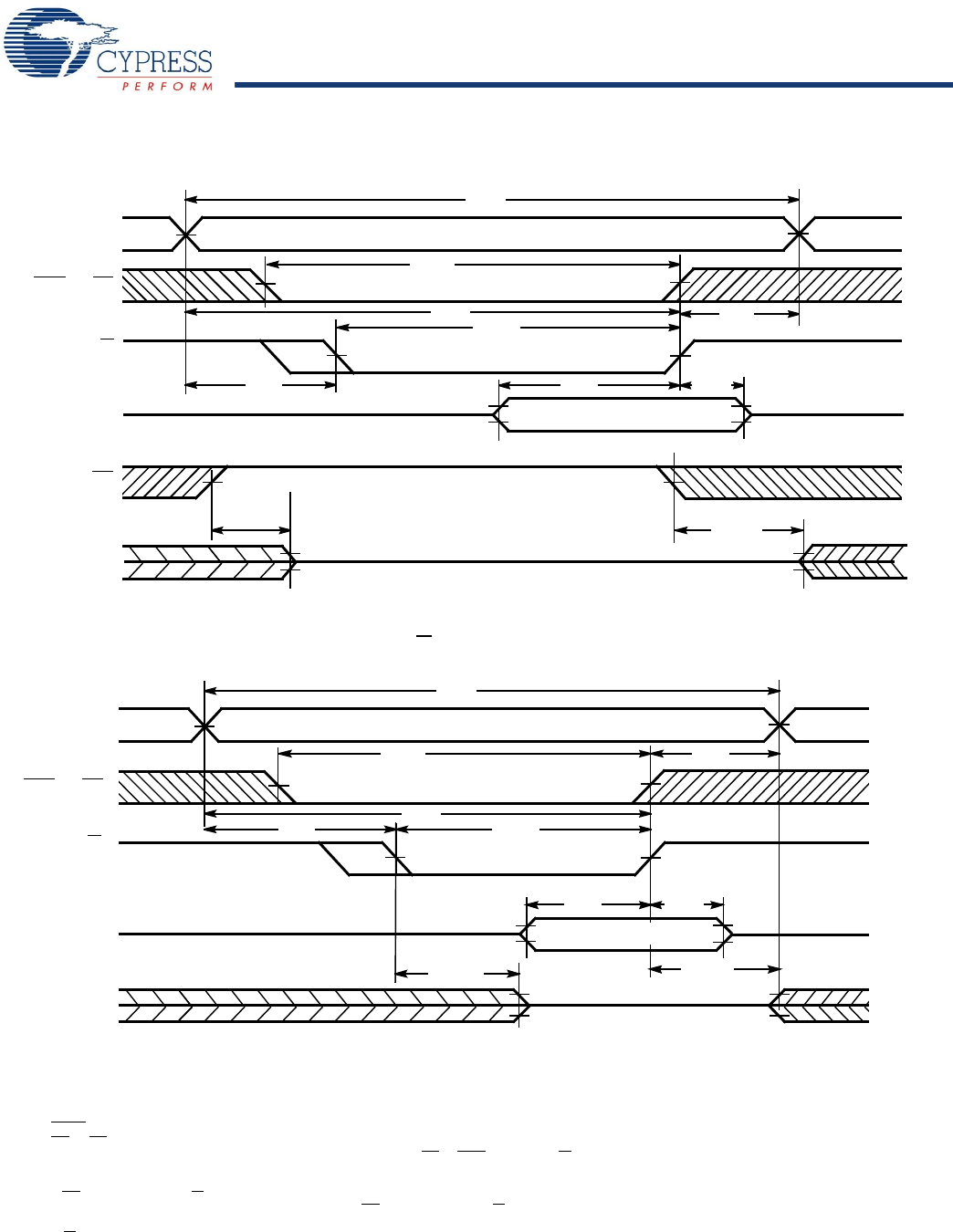
CY7C138, CY7C139
Document #: 38-06037 Rev. *D Page 8 of 17
Figure 7. Write Cycle No. 2: R/W Three-States Data I/Os (Either Port)
[22, 24, 25]
Figure 8. Semaphore Read After Write Timing, Either Side
[26]
Switching Waveforms (continued)
t
AW
t
WC
DATA VALID
HIGH IMPEDANCE
t
SCE
t
SA
t
PWE
t
HD
t
SD
t
HA
t
HZOE
t
LZOE
SEMOR CE
R/W
OE
DATA OUT
DATA IN
ADDRESS
t
AW
t
WC
t
SCE
t
SA
t
PWE
t
HD
t
SD
t
HZWE
t
HA
HIGH IMPEDANCE
SEM
OR CE
R/W
DATA OUT
DATA IN
t
LZWE
DATA VALID
ADDRESS
Notes
20.BUSY
= HIGH for the writing port.
21.CE
L
= CE
R
= LOW.
22.The internal write time of the memory is defined by the overlap of CE
or SEM LOW and R/W LOW. Both signals must be LOW to initiate a write, and
either signal can terminate a write by going HIGH. The data input set-up and hold timing should be referenced to the rising edge of the signal that
terminates the write.
23.If OE
is LOW during a R/W controlled write cycle, the write pulse width must be the larger of t
PWE
or (t
HZWE
+ t
SD
) to allow the I/O drivers to turn off
and data to be placed on the bus for the required t
SD
. If OE is HIGH during a R/W controlled write cycle (as in this example), this requirement does not
apply and the write pulse can be as short as the specified t
PWE
.
24.R/W
must be HIGH during all address transitions.
[+] Feedback



